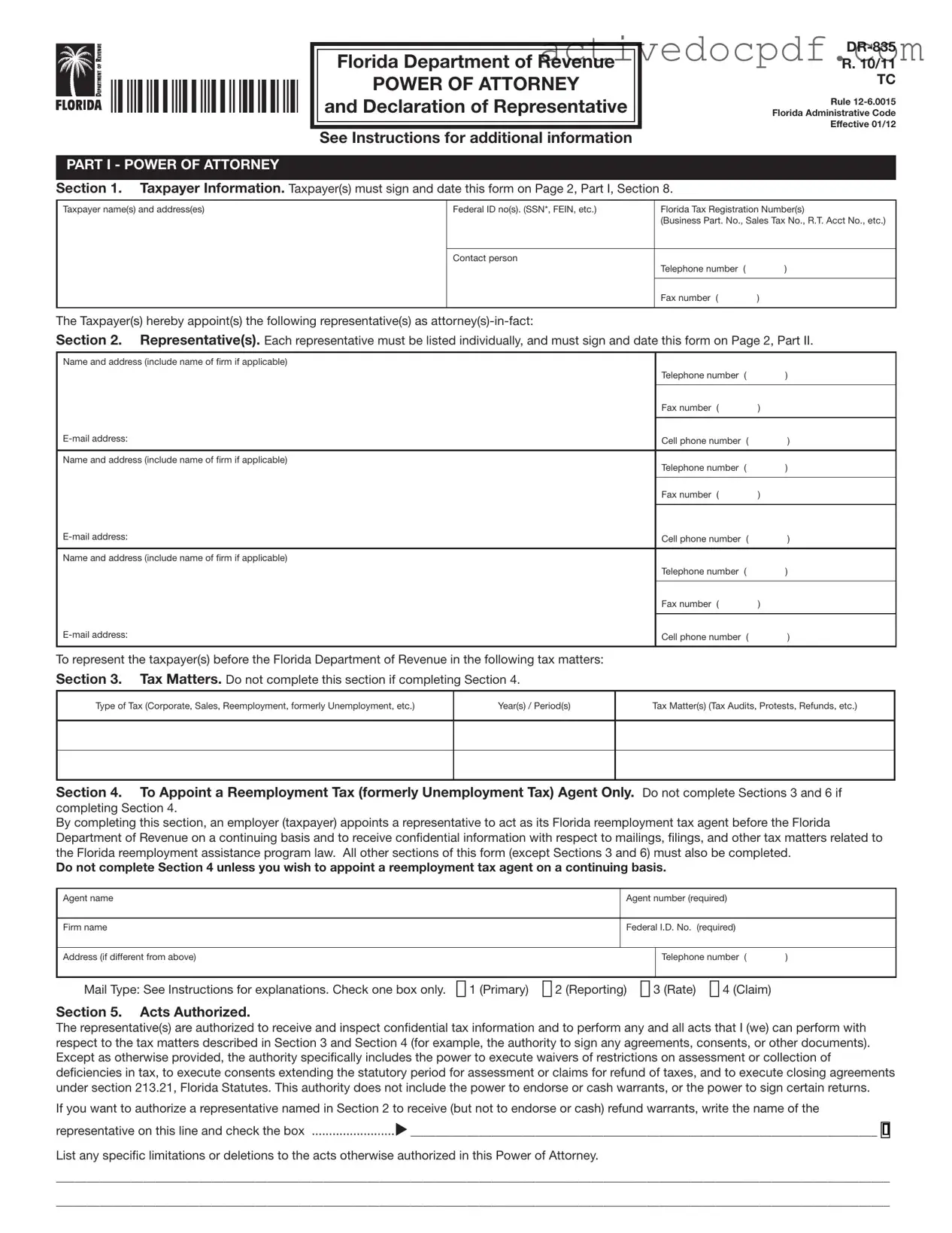The Tax POA DR 835 form is a Power of Attorney form used in the state of Colorado. It allows taxpayers to authorize another individual, often a tax professional, to represent them before the Colorado Department of Revenue. This representation can include handling tax matters, accessing tax records, and communicating with tax authorities on behalf of the taxpayer.
Any individual or business that wants to grant someone else the authority to handle their tax affairs in Colorado should consider filling out this form. This includes situations where you might need help with tax returns, audits, or other tax-related issues.
Completing the Tax POA DR 835 form is straightforward. Here are the steps to follow:
-
Download the form from the Colorado Department of Revenue's website.
-
Fill in your personal information, including your name, address, and Social Security number or tax identification number.
-
Provide the representative's details, including their name and contact information.
-
Specify the types of tax matters you are authorizing them to handle.
-
Sign and date the form to make it official.
After completing the form, you should submit it to the Colorado Department of Revenue. This can typically be done by mailing it to the appropriate address listed on the form or by submitting it electronically, if applicable.
No, there is no fee for submitting the Tax POA DR 835 form. It is a free service provided by the state to help taxpayers manage their tax affairs more effectively.
Processing times can vary. Generally, once the form is submitted, it may take a few weeks for the Colorado Department of Revenue to process it. However, if you have urgent matters, it's a good idea to follow up with them to ensure everything is in order.
Yes, you can revoke the Power of Attorney at any time. To do this, you will need to submit a written notice of revocation to the Colorado Department of Revenue. It’s also a good practice to inform the representative that their authority has been revoked.
If you don’t submit the Tax POA DR 835 form, your representative will not have the legal authority to act on your behalf regarding tax matters. This means they won’t be able to access your tax information or communicate with tax authorities for you, which could complicate your tax situation.
Yes, you can designate multiple representatives on the Tax POA DR 835 form. Just ensure that you provide all necessary information for each representative, including their names and contact details. However, keep in mind that this may complicate communication, so it’s often best to limit the number of representatives to those who are essential.
